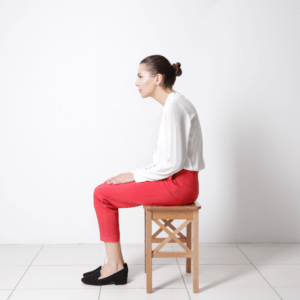A perfect chance for us to explain more about them. It’s a very common condition, affecting 1 in 5 women and 1 in every 15 men. While we hear the term ‘migraine’ thrown around a lot, what are they really? How do we manage them? Without further ado, let’s get into it… 💁♀️
What is a migraine? 🤔
In our opinion, a migraine is a sensory overload of the nervous system. This means that the nervous system is overfiring. This could be from irritation of the nerves around the head and face. When we add other stimulants like stress, light, alcohol, caffeine and extra stress, the system cannot cope and shuts down.
There are several types of migraine:
The most common are: with aura (seeing flashing lights before the migraine episode) or without aura There are even migraines without headache/known as ‘silent migraines’ (where you experience other symptoms, but no headache develops.
There are plenty of ways we can help you to manage them and reduce their effects.
What causes migraines? ⚡️
We don’t exactly know what causes migraines, but it’s thought that they come about as a result of changes in the chemicals, nerves and blood vessels of the brain. This is why we talk about an overloaded nervous system as being a primary factor in migraines occurring! A lot of people who experience migraines also have a close relative who experiences them, so there could be genetic factors in play as well.
Triggers for migraines, however, can really vary person to person. Some common triggers to be aware of are:
- Stress
- Tiredness
- Certain foods
- Alcohol or caffeine
- Menstrual hormones shifting – such as starting a period
Start noting what you are doing right before a migraine. This will go a long way towards helping you manage your migraines!
What are the symptoms of migraines? 🤕
We usually experience migraines as a moderate to severe headache, which comes on as a throbbing pain usually on one side of the head. This can be accompanied by:
- Feeling nauseous or sick in the stomach
- Vomiting
- Increased sensitivity to light or sound
These can last a few hours, or even a few days.
It’s important to note that some people experience migraines frequently, even several times a week. Others only experience them occasionally, and long stretches of time can pass between episodes.
Also, be aware that if you experience more severe things like paralysis or weakness in an arm or side of the face, slurred speech, problems swallowing, passing out, a sudden unusual agonizing headache, or headache with high fever, stiff neck, mental confusion, double vision and a rash, then call 999 immediately. These could be signs of something even more serious, like a stroke or meningitis.
How can chiropractic and massage help? 💆
Our approach is all about helping your whole system work better. We can help support your journey with a full assessment of what’s going on in your life and offering some gentle techniques to slow the nervous system down and prevent overreactions in the system.
We can also address any physical triggers, like trapped or obstructed nerves in the neck. Gentle massage can also help relax the head, neck and jaw muscles, thus reducing the severity of what you are experiencing.
How else can I manage migraines? 💪
In the short term, a migraine can feel unstoppable – but there are many things you can do in the immediate to ease an episode! In particular, start by turning off the lights. Relax in a dark, quiet room, and try to sleep if you can. Try applying hot packs and heating pads if you feel your muscles are tense. Or, apply a cold pack if you want a numbing effect from the pain.
Some people turn to medication to manage migraines, but there are other approaches. Here are a few suggestions:
- Start to note down what you eat – do you get a response after certain foods? Eliminate triggers to help get back on track.
- What’s your body’s response to caffeine? How about alcohol? Minimising these can really make a difference.
- Have you tried techniques to de-stress, like meditation or Yoga? Find ways to regularly integrate de-stressing into your routine.
- How is your sleep? Give yourself a regular sleep routine, plenty of time to unwind at the end of each day and minimising screens in the bedroom.
- How is your exercise regime? Regular activity can help keep you balanced and reduce the severity of migraines. Choose something gentle like walking, swimming or cycling. Start slowly, as exercising too vigorously can be a trigger!
And remember, we are always here to answer any questions you might have or find solutions that work for you. Give us a call any time to find out more about how Chiropractic and massage can help!





